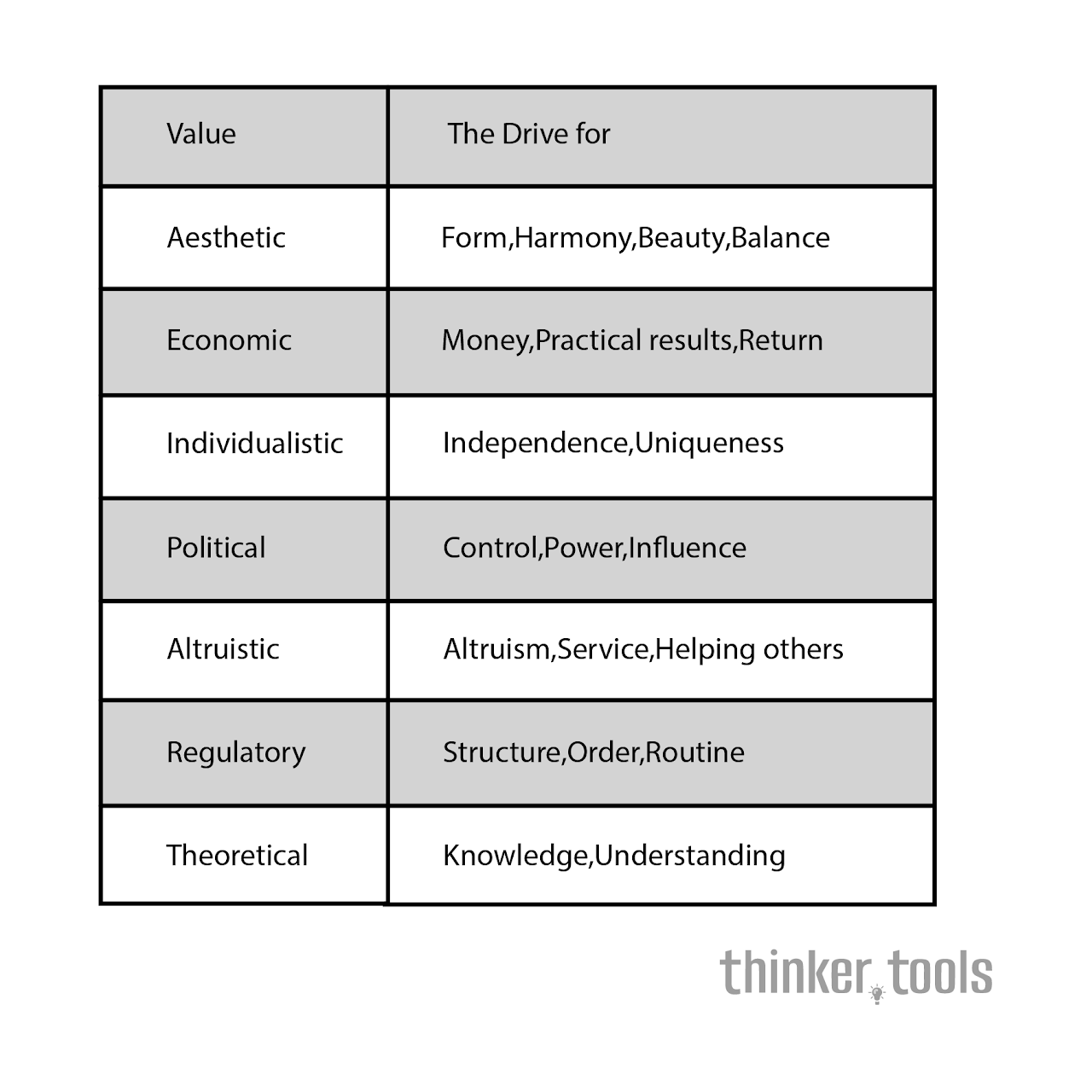
What is the Values & Motivations Framework?
The Values & Motivations framework is a comprehensive tool for understanding the underlying drivers of human behavior. It recognizes that beneath surface-level actions and statements lie core values and intrinsic motivations that truly guide decisions and behaviors. By learning to identify and speak to these deeper elements, you can communicate more effectively, influence more ethically, and build stronger connections.
This framework goes beyond simple personality typing or behavioral observation. It seeks to understand the "why" behind the "what," providing insights that allow for more meaningful and impactful interactions.
The History and Origin
The study of human values and motivations has deep roots in psychology and philosophy. Abraham Maslow's hierarchy of needs (1943) provided early insights into human motivation. David McClelland's Human Motivation Theory identified key motivational drivers: achievement, affiliation, and power.
More recently, Shalom Schwartz developed a comprehensive theory of basic human values, identifying ten universal values that guide human behavior across cultures. Tony Robbins' Six Human Needs framework and various corporate models like Daniel Pink's Drive (autonomy, mastery, purpose) have made these concepts more accessible and practical.
How to Use the Values & Motivations Framework
Step 1: Observe Behavioral Patterns
Look for consistent patterns in how people:
- Spend their time and money
- Make decisions
- React emotionally
- Talk about what matters to them
- Choose their environment and relationships
Step 2: Listen for Value Language
Pay attention to words and phrases that indicate values:
- "It's important to me that..."
- "I believe in..."
- "I can't stand when..."
- "What really matters is..."
- Strong emotional reactions often indicate violated values
Step 3: Identify Core Motivations
Common human motivations include:
- Security: Safety, stability, predictability
- Achievement: Success, accomplishment, recognition
- Connection: Belonging, love, relationships
- Growth: Learning, development, progress
- Contribution: Making a difference, legacy
- Freedom: Autonomy, choice, independence
- Power: Influence, control, status
- Pleasure: Enjoyment, comfort, fun
Step 4: Test Your Hypothesis
Validate your understanding by:
- Asking clarifying questions
- Observing reactions to different approaches
- Noticing what energizes or deflates them
- Seeing how they prioritize when values conflict
Step 5: Adapt Your Approach
Once you understand someone's values and motivations:
- Frame ideas in terms of their values
- Highlight how proposals serve their motivations
- Avoid triggering value conflicts
- Build on shared values for connection
Step 6: Respect and Ethics
Always use this knowledge ethically:
- Seek win-win outcomes
- Respect others' values even if different from yours
- Use influence for mutual benefit
- Be transparent about your own values
Practical Examples
Sales Success: A software salesperson notices a prospect repeatedly mentions "protecting our data" and "avoiding risks." Recognizing security as a core value, she reframes her pitch to emphasize the product's security features and risk mitigation, leading to a successful sale.
Team Management: A manager discovers one employee is motivated by learning (growth) while another seeks recognition (achievement). She assigns the first challenging new projects and publicly acknowledges the second's contributions, dramatically improving both employees' engagement.
Parenting Application: Parents notice their teenager values independence highly. Instead of strict rules, they offer choices within boundaries, reducing conflict while still maintaining necessary structure.
Relationship Harmony: Partners realize they have different core values – one values adventure (freedom) while the other values stability (security). They create a life that honors both, with stable routines punctuated by planned adventures.
Benefits and Life Impact
Mastering the Values & Motivations framework enhances your life significantly:
Improved Relationships: Understanding what drives loved ones helps you support them more effectively and avoid unnecessary conflicts over misaligned expectations.
Enhanced Leadership: Leaders who understand team members' motivations can inspire higher performance and satisfaction by aligning roles with intrinsic drivers.
Better Communication: Messages tailored to others' values are heard and received more readily, reducing misunderstandings and resistance.
Successful Influence: Ethical influence becomes natural when you help others achieve what they already value rather than trying to change their values.
Reduced Conflict: Many conflicts stem from clashing values. Understanding this helps navigate differences with respect rather than judgment.
Increased Empathy: Recognizing that others' behaviors stem from legitimate values and needs, even if different from yours, builds compassion.
Self-Awareness: Learning to identify values in others often leads to better understanding of your own motivations and drivers.
Career Success: Whether in sales, management, or collaboration, understanding motivations gives you a significant professional advantage.
Personal Growth: Recognizing how values drive behavior helps you make more conscious choices aligned with your authentic self.
The Values & Motivations framework is like having a decoder ring for human behavior. It transforms confusing or frustrating interactions into understandable patterns, allowing you to connect with others at a deeper level. This isn't about manipulation – it's about understanding and serving others better while creating mutually beneficial outcomes. In a world where surface-level interactions often leave us feeling disconnected, this framework provides a path to meaningful understanding and authentic influence. By honoring what truly matters to people, you become someone who helps others achieve their deepest aspirations while building a network of strong, values-aligned relationships.